Road Trip | Champagne, France | Ypres, Belgium
A long weekend road trip through the Champagne and side trip to Ypres, Belgium
Text | Anninka Kraus
Photography | Tobias Kraus

France Champagne
The Champagne is a protected AOC (L’appellation d’origine contrôlée) production zone that encompasses 34000 hectares of vineyards into four main growing areas: the Montagne de Reims, the Vallée de la Marne, the Côte des Blancs and the Côte des Bar.
The word ‘champagne’ is often improperly used to also describe bubbly produced outside of this area, which contrary to popular belief however can never be champagne, irrespective of its quality.
On our first visit to Africa in 2012, we met an Australian couple, Rob and Christel, on their honeymoon. Or, as Rob immediately specified “Christel’s honeymoon”, for she wanted to see giraffes. Rob would not have chosen Africa as a destination but Europe, where two and a half years later they spent one week of their six weeks long vacation with us.
That was his honeymoon for he’s as much in love with Europe as his wife is with giraffes. After spending twenty years in the army, Rob is now working for the Department of Veterans’ Affairs in Australia and involved in most of their commemoration and anniversary ceremonies abroad. I believe him to be deeply passionate about his job but the greatest incentive for taking this position for sure were regular business class flights to France.
After failing to see Rob in Paris on several occasions, we chose his stay in Ypres, Belgium, an eight-hour drive from our place, to meet. We checked flights, but they were either outrageously expensive or the connecting airports so inconveniently situated to both locations that our only option was to drive. Knowing I’d be a bit edgy after two consecutive days with eight hour stretches on monotonous highways – the frequent interruption by peage stations is no pleasant diversion – we took Friday off and left for the Champagne, a region in France we’ve both not yet visited, in the late afternoon on Thursday.
In case you’re expecting a post on champagne tastings you’ll be disappointed as we don’t drink champagne but regardless of tastings, Champagne is an extraordinarily gorgeous region to visit on a road trip.
As we would arrive late on the Thursday and most B&Bs have very restricted check-in times, like 6 to 8pm, I contacted some gîtes d’hôtes (guesthouses) and enquired whether a late check-in between 9 and 10pm would be possible. My emails were in English but sugarcoated, yet the arrogant, unfriendly tone in most replies was just atrocious.
An extract of the reply from the place we ended up staying: ‘Nous avons encore une disponibilité pour la nuit du jeudi 21 Septembre et nous pouvons accepter une arrivée tardive mais PAS APRES 22h . Si cela vous est possible d’arriver avant 22h nous pouvons vous réserver une chambre mais vous devez savoir qu’à cette heure là vous ne pourrez pas diner et pas utiliser le spa non plus.’
Even if you don’t speak French you’ll appreciate PAS APPRES 22h (NOT AFTER 10 pm) being written in capitals (I did say we’d arrive between 9 and 10, not after) and they kindly pointed out, that at that hour we could certainly forget about dinner and spa. Doesn’t that make you feel welcome? Luckily, I understand some French but not why they replied to an email in English in French when it’s obvious from their replies to reviews on TripAdvisor that they master both perfectly well? The French must be the only people, besides all native English speakers, who expect everyone else to speak their language. Hurrying to arrive PAS APPRES 22h, I got caught on a speed camera, but we reached the guesthouse shortly after nine. No guillotine for us!
There we were, anticipating some obnoxious grouch that I hoped to placate with an arrival well before their deadline, but our hosts turned out to be most charming and sociable. Sandrine showed us the spacious kitchen and dining room where other guests were enjoying coffee after dinner and our room and explained that they’d only recently opened after renovating this Burgundian home from the 15th or 16th century (no one knows exactly) themselves for nine months.
A thoughtfully renovated old place like this B&B beats all other accommodation in my opinion. Its character and soul showed in the ancient, uneven stone walls, dark wooden beams and polished hardwood planks, and small details like the self-build dining room table constructed of wine crates, and the refurbishing added all modern comforts.
The next morning, we were placed at the table with two other couples, one German, the other French and only the men capable of the others’ language and some English. This didn’t discourage the French lady from chattering away, expecting everyone to understand French, which the other lady didn’t and looked palpably uncomfortable. The homemade croissants however were delicious, and José had prepared enough French toast to feed five times as many guests.
‘It’s a shame you missed out on last night’s dinner. That was simply amazing!’ we were told by the German guest. Why thanks for rubbing it in, I thought, but take-away salad and stale bread rolls on the road were also quite delicious. We knew he wasn’t exaggerating though when Sandrine then told us that José and she met in Lucerne twenty years ago, working in the Château Gütsch, a white fairy-tale Belle-Epoque castle with turrets on an elevation overlooking Lucerne and Vierwaldstätter lake, him as a cook.
After breakfast, we were seen off with handshakes, smiles and waves and on our way to Reims, located 130 km east-northeast of Paris in the Champagne.
jump ahead.
Our favourite hotels, cafes, and restaurants in the Champagne
Patisserie Vincent Dallet – excellent macarons
Brasserie Le Jardin – for lunch or dinner
Patisserie Vincent Dallet – more excellent macarons
Fromagerie Gaugry – a French B&B guest who’s been visiting the Champagne for years highly recommended this place
Villa Eustache – beautiful B&B

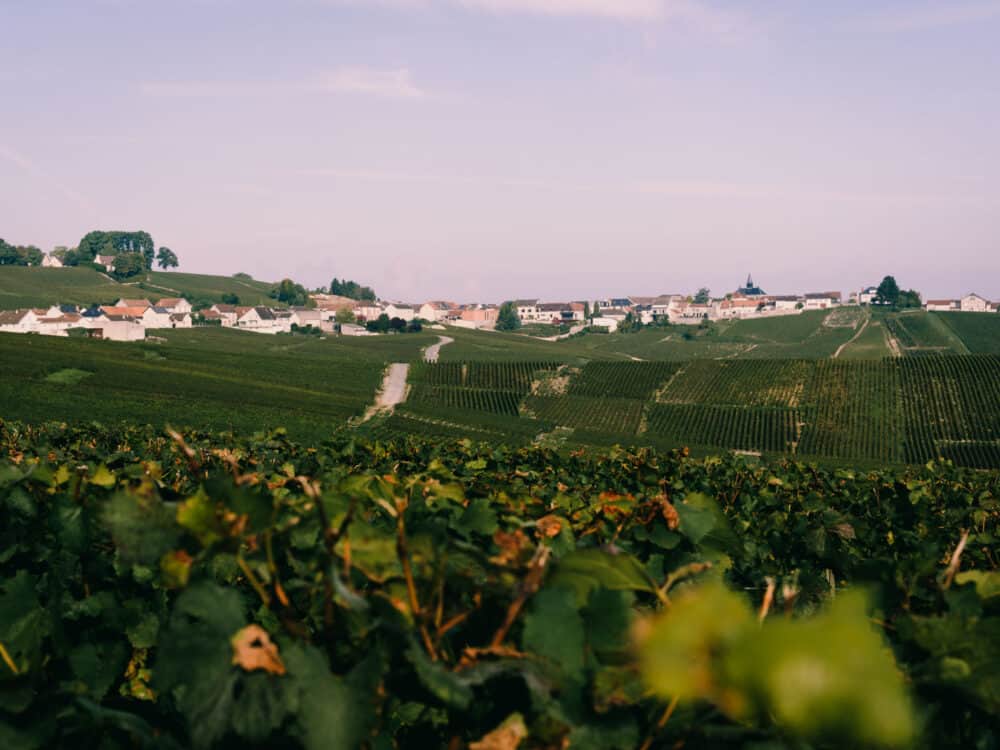




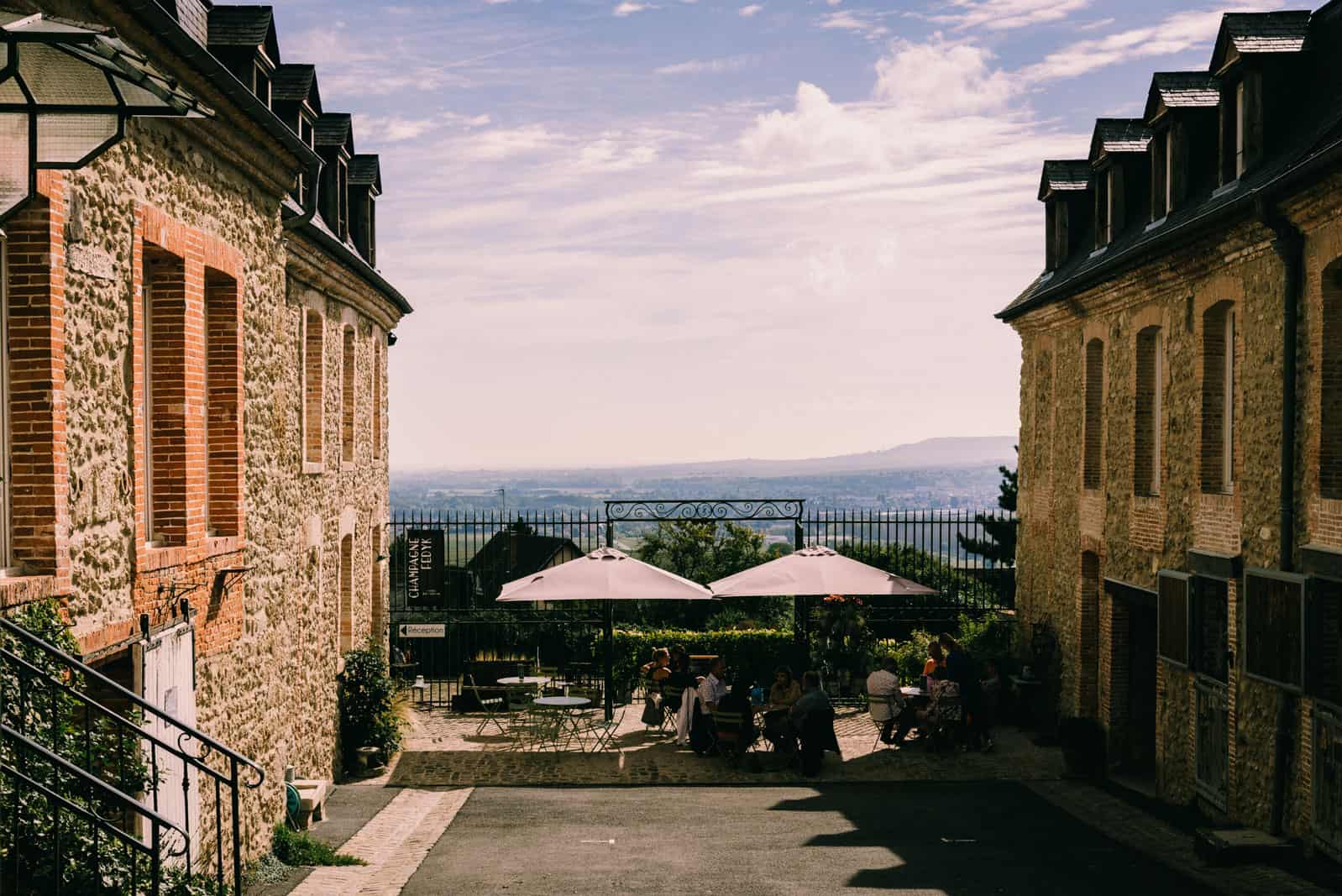
Champagne 4 day Road Trip map
what to expect.
A Route de Champagne road trip through small villages embedded in the gently undulant vineyards sweeping up the slopes that consist almost entirely of small champagne wineries
La cathédrale Notre-Dame de Reims – the famed cathedral of Reims where almost all kings of France were crowned, from 1027 to 1825
The famous Avenue de Champagne, a boulevard in Epernay lined with great Champagne Houses such as Moët & Chandon, de Venoge, Lafond, Perrier Jouët, and Mercier
Ypres, an exceptionally beautiful small city in West Flanders, Belgium that flourished in the Middle Ages but was almost entirely destroyed in World War I
Troyes – presumably one of the loveliest medieval towns in France boasts a great number of half-timbered houses and Gothic churches
location & visitor information.
Where is the Champagne? The Champagne wine region lies in the northeast of France between Paris and Belgium. Just across the border, in Belgium, lies Ypres.
Discover Reims – the largest city in the Champagne region with its famed cathedral, La cathédrale Notre-Dame de Reims
Our walking tour route passes by many of the beautiful sights of Reims and includes a lunch break at Brasserie Le Jardin and a stop at Patisserie Vincent Dallet for macarons
Visit Epernay – the self-proclaimed capital of the Champagne with its famous Avenue de Champagne, a boulevard lined with great Champagne Houses such as Moët & Chandon, de Venoge, Lafond, Perrier Jouët, and Mercier
Route de Champagne – embark on a road trip through the Champagne and cruise through scenery that is gentle, rural but accessible, wealthy yet rooted to the soil so to speak, and charmingly pretty. The small villages embedded in the gently undulant vineyards sweeping up the slopes, like Hautville, Ay, and Mutigny consist almost entirely of small champagne wineries and appear untouched by the passage of time.
Reims
The largest city in the Champagne region is Reims, and it was there, on the doorstep to its famed cathedral, that I stood below a great pointed arch towering above me and craned my neck in amazement at the finely chiselled stone statues stretching in lines up both sides of the arch. The sun tinged the sandstone a golden yellow in areas that were more recently renovated and contrasted with the grey colour of the weathered older sandstone further up the towers. Nothing but this colour difference hinted at the severe damage inflicted by German bombardment and fire during World War I.
Later, looking at the cathedral from across Place du Parvis, I realized just how small this arch was in proportion to the whole front facade. Seeing the relation gave me an inkling of how colossal this building is and what effort was required in the 13th century to construct this prodigious cathedral.
I passed through the wooden door, which was more a gate the size of a pulled-up drawbridge and waited briefly for my eyes to adjust to the gloomy twilight shared by all churches I’ve so far visited other than the Sagrada Familia in Barcelona. The 38 metres high and nearly 140 metres long nave of La cathédrale Notre-Dame de Reims was supported by massive grey pillars and a grand display of power and a fitting tribute to its prominent role in French history. Almost all kings of France were crowned here, from 1027 to 1825.
When everything about this cathedral, a UNESCO World Heritage-listed one at that, screamed royalty and power, then why, I wondered, did someone skimp on proper pews and filled the nave with ugly wooden chairs? The rose windows, a kaleidoscope of stained glass, however, were beautiful and on this sunny day admitted the light reluctantly like a candle illuminating a colourful St. Martin’s lantern.
I had booked lunch at the Brasserie Le Jardin, and to hide the fact that my visit to Reims was more or less centred on meeting this 12:30 appointment with delicious French cuisine, I proposed a walking tour of the sights of Reims. The 7.7km walking route, which at a very leisurely pace and with many stops took us 3 hours, starts at the cathedral and just happened to include lunch and a stop at Patisserie Vincent Dallet for what the French do best, pastries.
related | The best of Puglia in 7 days

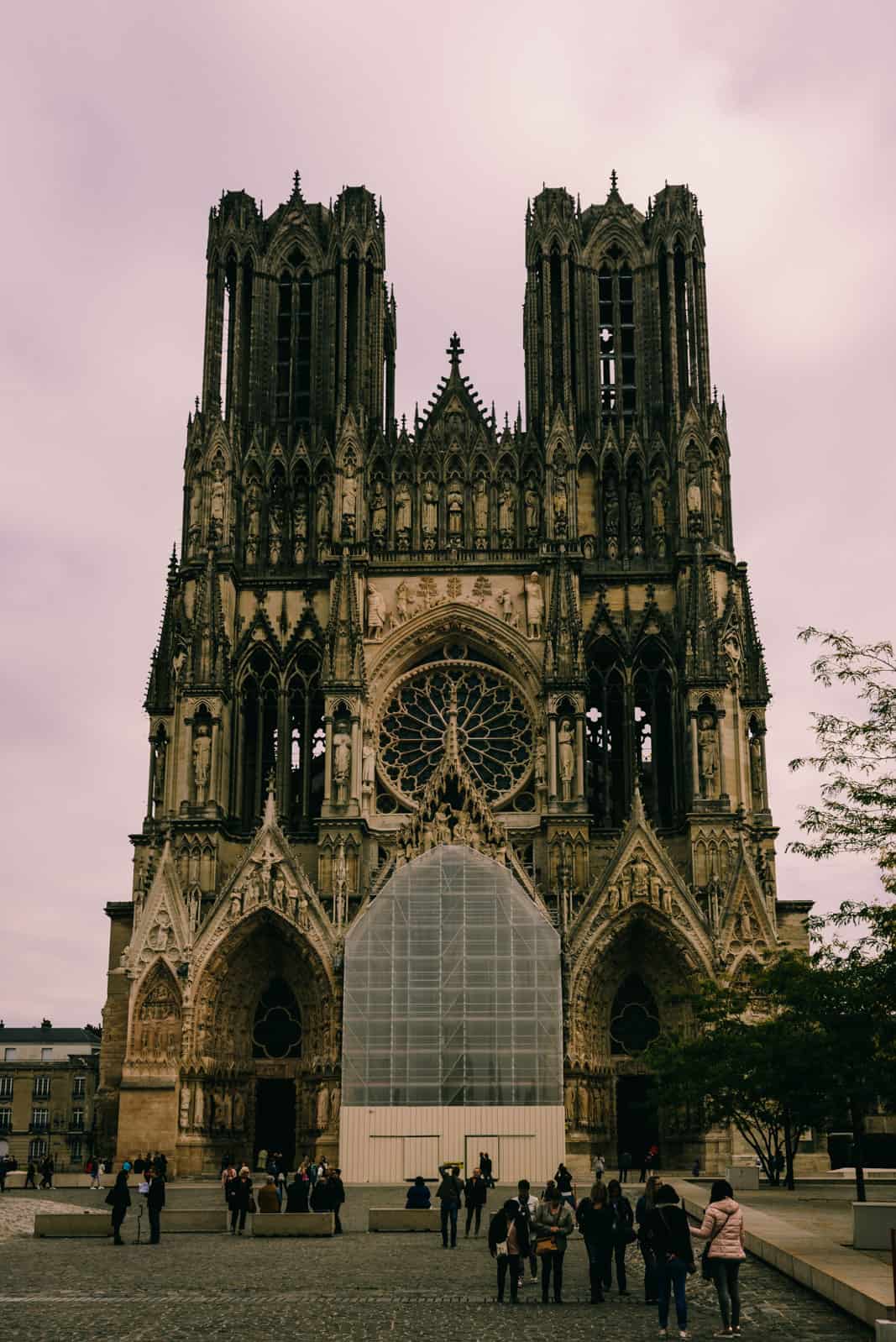


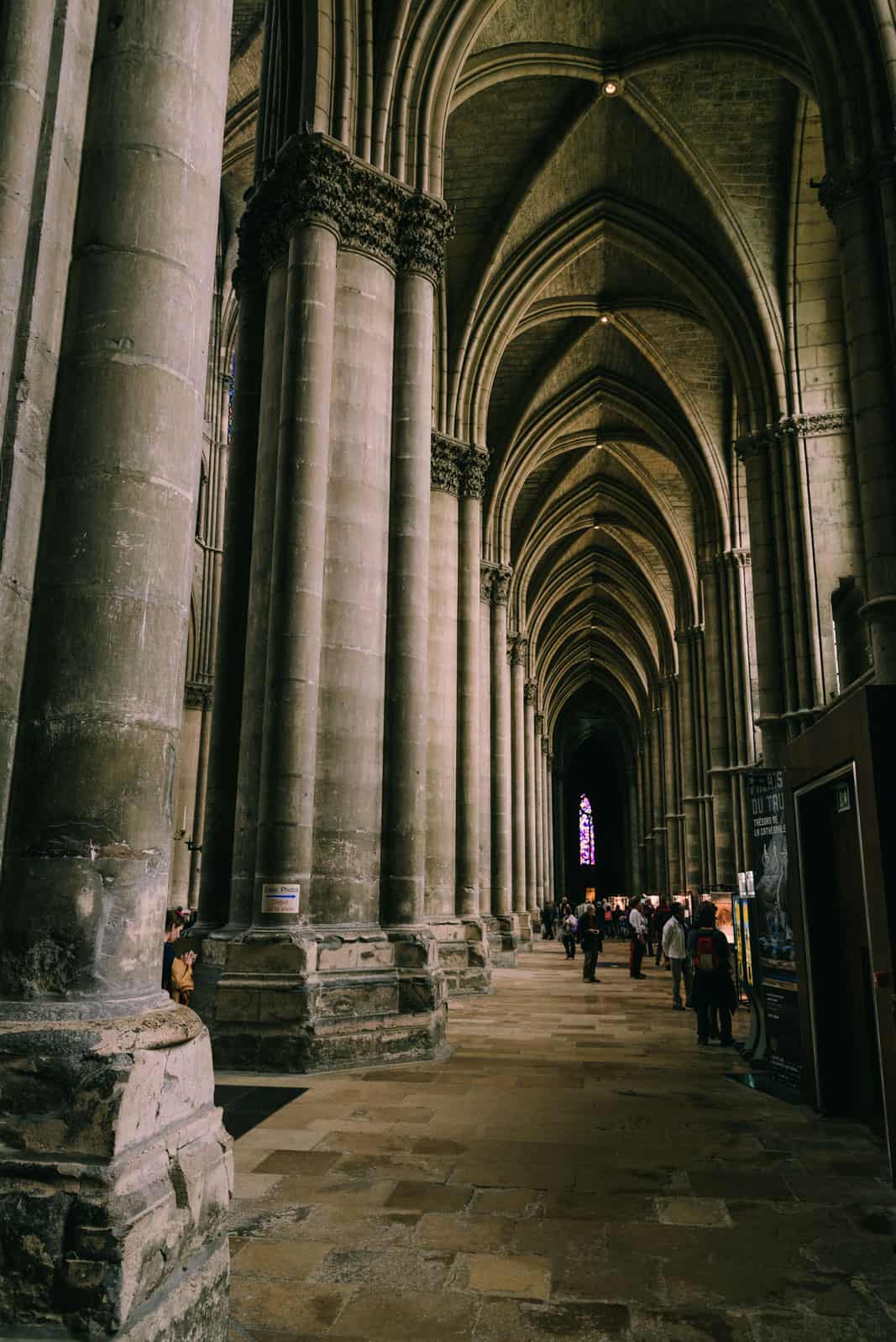


The 38 metres high and nearly 140 metres long nave of La cathédrale Notre-Dame de Reims is supported by massive grey pillars and a grand display of power and a fitting tribute to its prominent role in French history.
City walk in Reims
This city walk passes by many of the beautiful sights of Reims, capital of the Champagne region northeast of Paris, and in our case just so happened to include a lunch break at Brasserie Le Jardin and a stop at Patisserie Vincent Dallet for macarons.
From La cathédrale Notre-Dame de Reims (Reims Cathedral) the route leads past Palais du Tau on the southern side of the cathedral (the palace of the Archbishop of Reims in a mix of Gothic and Baroque style) to Domaine Pommeroy of the Vranken-Pommery Group, the second-largest producer for champagne worldwide and Europe’s leading winegrower, selling 20.3 million bottles of champagne in 2011.
The Domaine Pommery is set on a 50 hectares estate and its buildings in a neo-Gothic style with turrets and crenellations, and a facade of blue walls bordered by red brick give it the fanciful fake appearance of a Disney fairytale castle. My artistic understanding failed me yet again, as I stood before a peculiar fruit tree sprouting oversized, brightly coloured bananas, watermelons, and oranges on the front lawn and wondered whether this was an attempt at a children’s bouncy castle gone wrong or the artist had mistaken Pommery for a fruit dealer not leading champagne house. Either way, it added a splash of colour to the driveway.
We continued and minutes later arrived at Les Crayères, a chateau-style hotel set in a seven-hectare park, and its brasserie for déjeuner (lunch). Our expectations of French cuisine were high and we were not disappointed – the Tarte au citron meringuée (lemon pie) was a brilliant finale to lunch if ever there was one.
When returning to the city centre we passed by the Basilique Saint-Remi, an abbey dating back to the 11th century, and back at the cathedral added a stroll through the interesting city centre; interesting in that in Reims – according to legend founded by Remus, the brother of Romulus and alleged founder of ancient Rome – Baroque, Gothic, Art Deco and Roman architecture all intermingle. Not quite by accident, we found our way into Patisserie Vincent Dallet for deliciously chewy pistachio macarons.
track details.
Route Walking Tour Reims: La cathédrale Notre-Dame de Reims (Reims Cathedral) – Palais du Tau – Domaine Pommery – Les Crayères – Brasserie Le Jardin – Abbey of Saint-Remi – city centre Reims
Distance: 7.7km
Time: 3 hours
Start: La cathédrale Notre-Dame de Reims (Reims Cathedrale)
End: city centre Reims (corner Rue de Talleyrand and Rue de Vesle)

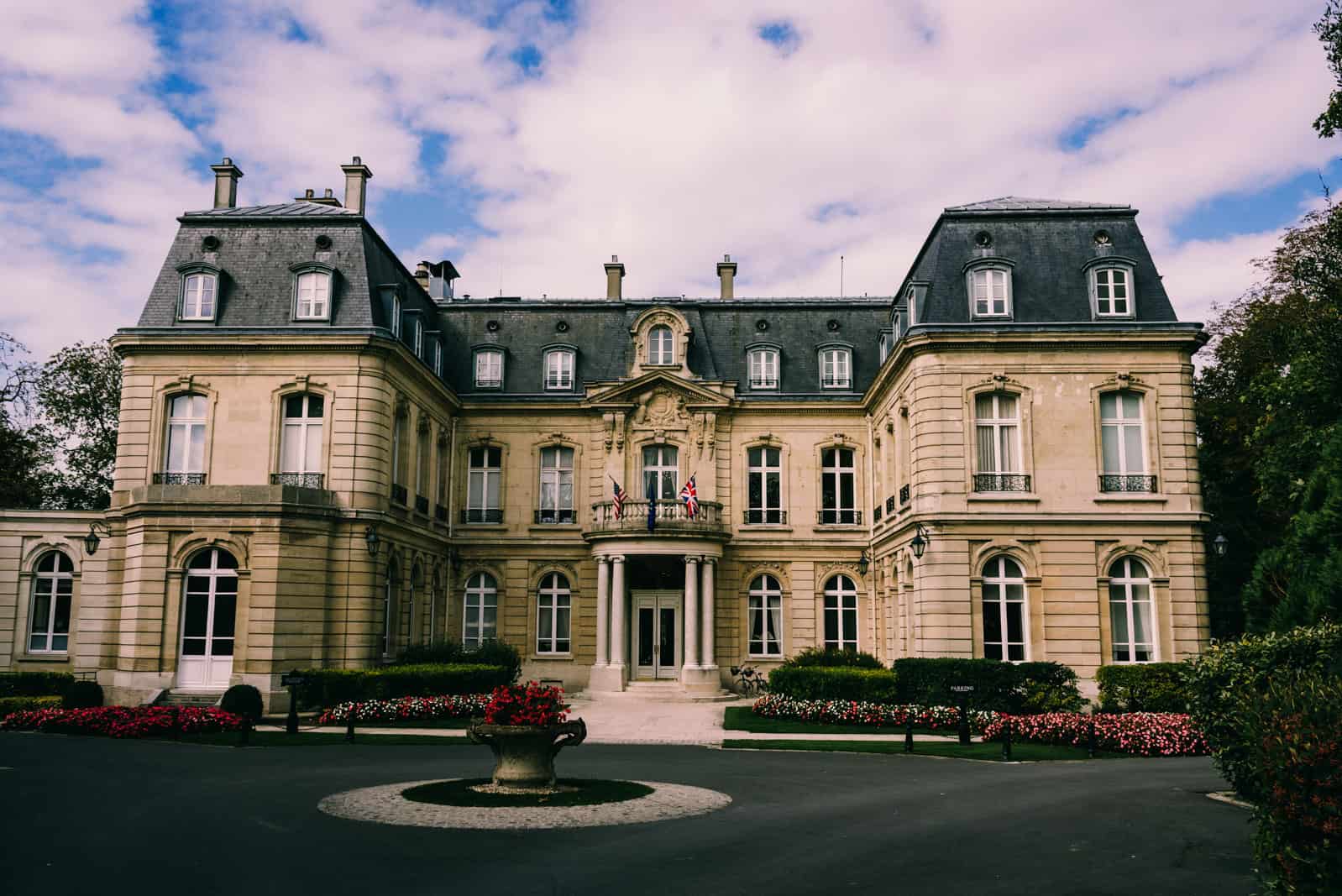



Maison de Champagne Vranken-Pommery.
City walk in Reims map
Epernay
One would think that one-stop for macarons in-between a 2-course lunch and 4-course dinner would be plenty to satiate our appetite, and indeed it was. But when we walked past Patisserie Vincent Dallet’s branch in the city of Epernay, a 30min drive south of Reims, less than two hours later, I walked out again swinging a cardboard box full of these petites bouchées in various colours and flavours.
Epernay itself, the self-proclaimed capital of the Champagne, is also petit and few tourists strayed into the tangle of narrow alleys in the old quarter.
Instead most flocked to the famous Avenue de Champagne, a boulevard lined with great Champagne Houses such as Moët & Chandon, de Venoge, Lafond, Perrier Jouët, and Mercier.
The grand mansions set in landscaped gardens, their grandeur underlined by wrought-iron fences and ornate gates, were a little too pompous for my taste. But I admit that this is a place that oozes love for champagne, splendour, and heritage. Aboveground the avenue stretches for barely a kilometre east of the city centre, but belowground 110 kilometres of cellars hide the accumulated riches of decades.





Vertus
A half-hour south of Epernay lays the municipality of Vertus nestled into the vineyards, which I picked as our overnight stop for two reasons. Villa Eustache is located there for one and I was dying to meet the person who had tastefully painted the B&B living room a dark purple. Also, we were in for another rendezvous with French high cuisine for dinner at Chateau d’Etoges, a 15-minute drive from Vertus.
The B&B is located on a little elevation on the village outskirts and was indeed decorated with such taste and character that every home decorating magazine I’ve ever flicked through (admittedly not that many though) paled in comparison. Through the floor-to-ceiling windows in our room, above the red geraniums crowning the French balcony, we overlooked Vertus, and through the bathroom window the surrounding vineyards.
We didn’t stay long though before setting out again for dinner, and as we entered the large landscaped estate of Château d’Etoges, through an ornate wrought-iron gate and walked up the tree-lined alley towards the castle the sun had just set but it was still light enough to take in the chateau of the 17th century which is nowadays a 4-star hotel.
The estate has retained all charms of a storybook castle with swans floating on the moat, miniature lakes, fountains and an orangery turned into a restaurant, which serves a vegetarian menu (an exception in France).
The two amuse-bouche, starter, and main were excellent but didn’t measure up to the last four courses. We ordered a four-course set meal and I’m incorrectly counting the small amuse-bouche as a course, but they were delicious and came as a surprise, which in my opinion dining out is all about. As the French have a deeply ingrained passion for wine and cheese, both are served in abundance in almost all French restaurants, the latter often for dessert.
Usually, I’d always go for a sweet dessert instead of cheese but at the château, both were included in the menu and when the laden cheese trolley rolled up to our table and the stooped headwaiter recounted more than twenty types of cheese at the top of his head I was spoilt for choice. A cheddar flavoured marble cheese dyed in many different vibrant colours, which we saw years ago at Walmart, was certainly not among them, but Brie de Meaux, Comté, Morbier, Reblochon, Eposses de Bourgogne, and Tome de Savoie to name a few. I was still savouring the last of the Roquefort, as another waiter approached with a ‘pre-dessert’.
To think that I can from now on always order two desserts and just call one the pre-dessert! The proper dessert was served and as if that wasn’t enough a platter of macarons and small cakes followed to finish me off.
After the dinner feast the night before and with fresh croissants and baguette awaiting us for breakfast we went for a run through the vineyards the next morning, just as the sun struggled through the light layer of early morning mist that had settled in the valley.
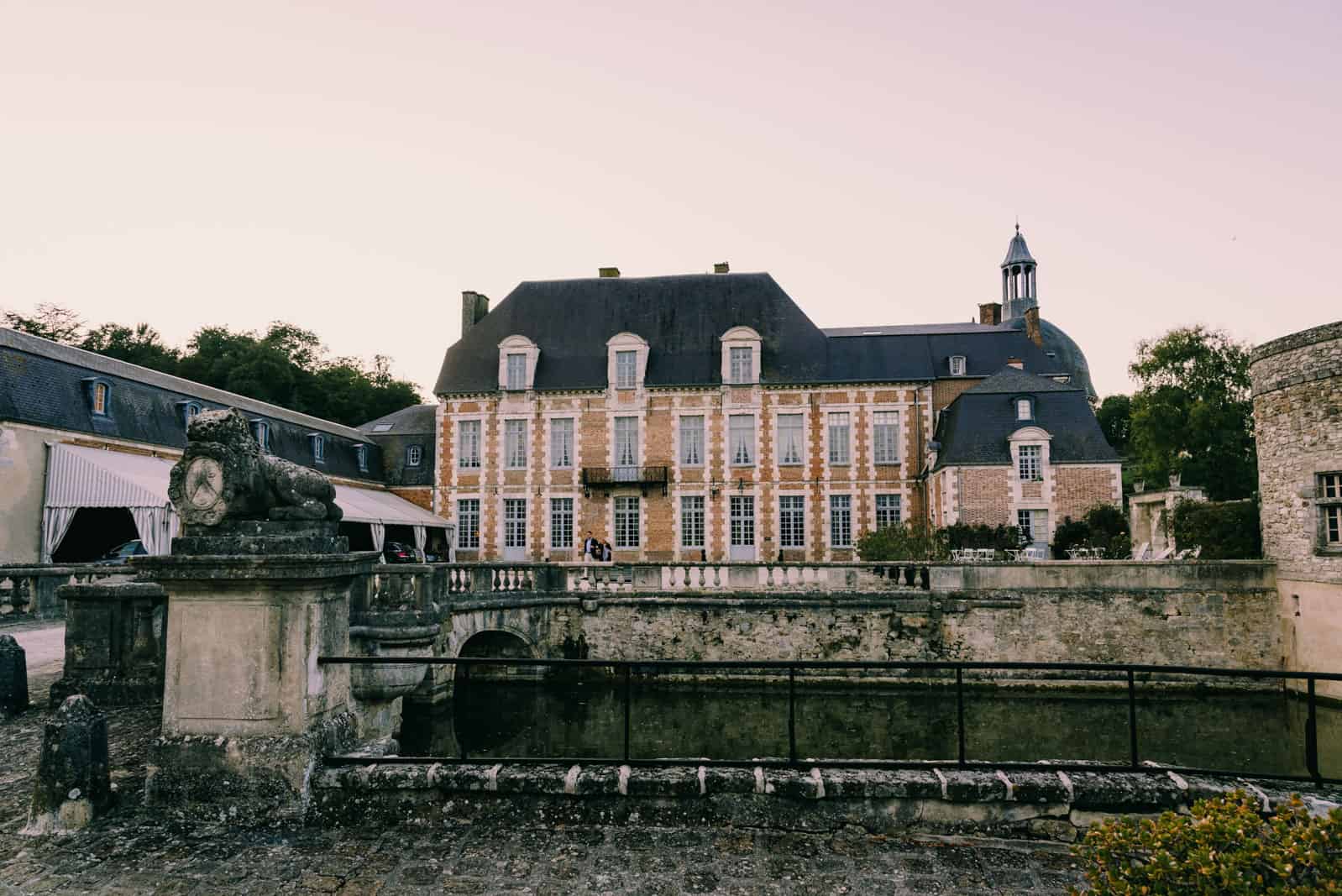

Running through vineyards in the Champagne
After a four-course dinner and several amuse-bouche the night before, and a breakfast table laden with croissants and baguette awaiting us, going for an early morning run was as much a choice as it was a necessity.
Luckily our B&B in Vertus, a village in the Champagne south of Reims, was bordering on vineyards stretching up and down the gentle slopes to woodlands above and far into the valley below. We started running and were right away engulfed by a sea of grapevines in the vineyard of Vignobles Larmandier-Bernier. The leaves in September were still predominantly green but with autumn fast approaching, some had already turned a blazing ruby.
The morning air was crisp and our hot breath rising in small white puffs made me think of two steam engines wheezing uphill weighted down with too much dessert from the night before. My fingertips were just turning numb when we escaped from the mist and the temperature rose noticeably.
Released from the fog, the neat rows of vine basked in the pale sunshine, but looking back towards Vertus, only the church spire peeked out from the pea-soup. We didn’t see a single person on this run but when we reached the forest edge at the top of the little elevation, we noticed a marked fitness trail and a beautiful picnic spot with views of vineyards stretching forever into the valley that later in the day would surely attract more people.
It was this panorama we had in mind when planning our visit to the Champagne, and running – this time through grapevines – yet again turned out to be a great way to connect to a foreign place. On our way back, the sun climbed high enough to make short work of the stubborn mist and by the time the old white pet dog waddled towards us as we reached the B&B’s gate, it had turned into a fine day with blue skies and sunshine. Who would have thought, but this 50-min run was no doubt one of my highlights on our road trip through the Champagne.


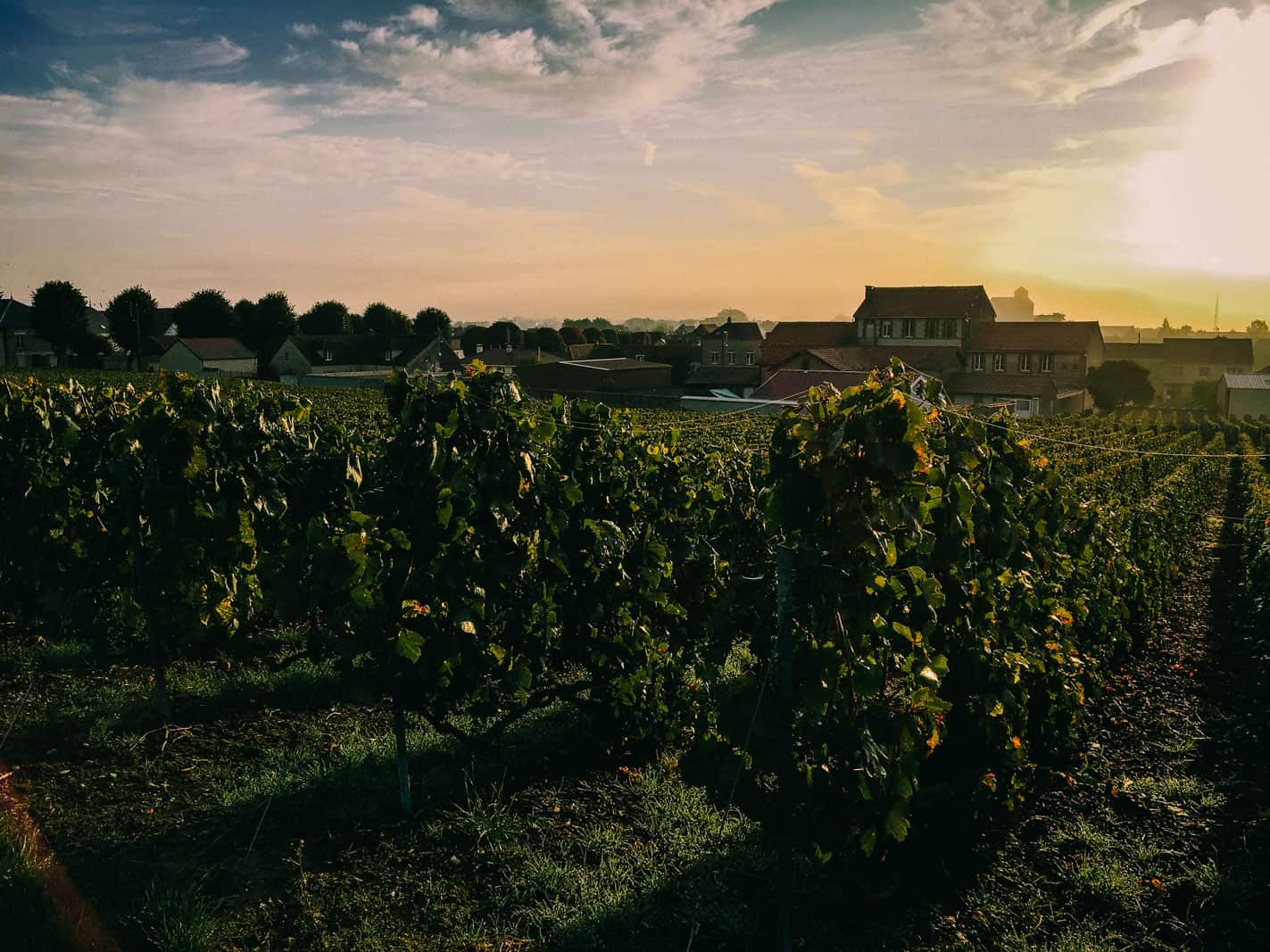

The leaves in September were still predominantly green but with autumn fast approaching, some had already turned a blazing ruby.
Route de Champagne
If you were short on time with only a day to explore the Champagne, my advice would be to skip Reims and Epernay and cruise along the Route de Champagne, a scenic drive that wasn’t at all crowded when we visited.
It’s one of the prettiest road trips yet very unlike most scenic drives or train journeys we’ve done, which led through scenery that was thrilling, rugged, and oftentimes remote – like the Great Ocean Road in Australia, crossing the Nullarbor Plain on the Indian Explorer, the Garden Route in South Africa, or a bus ride through the Namib Desert.
The Champagne is different. It’s gentle, rural but accessible, wealthy yet rooted to the soil so to speak, and charmingly pretty. The small villages embedded in the gently undulant vineyards sweeping up the slopes consisted almost entirely of small champagne wineries and appeared untouched by the passage of time. We visited Hautville, Ay, and Mutigny (for the view) before leaving for Ypres, on a 2.5-hour drive from Reims, in the afternoon.
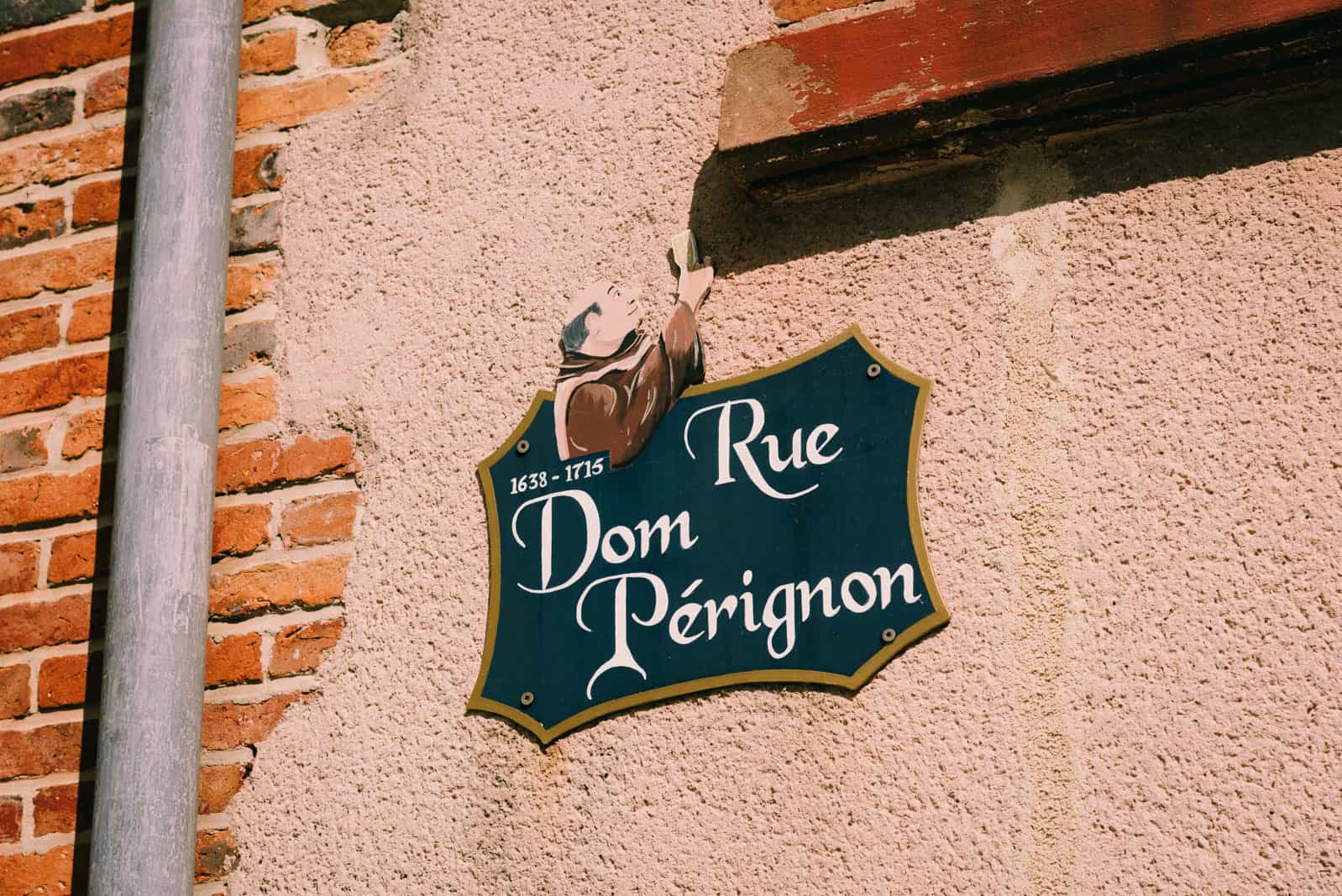



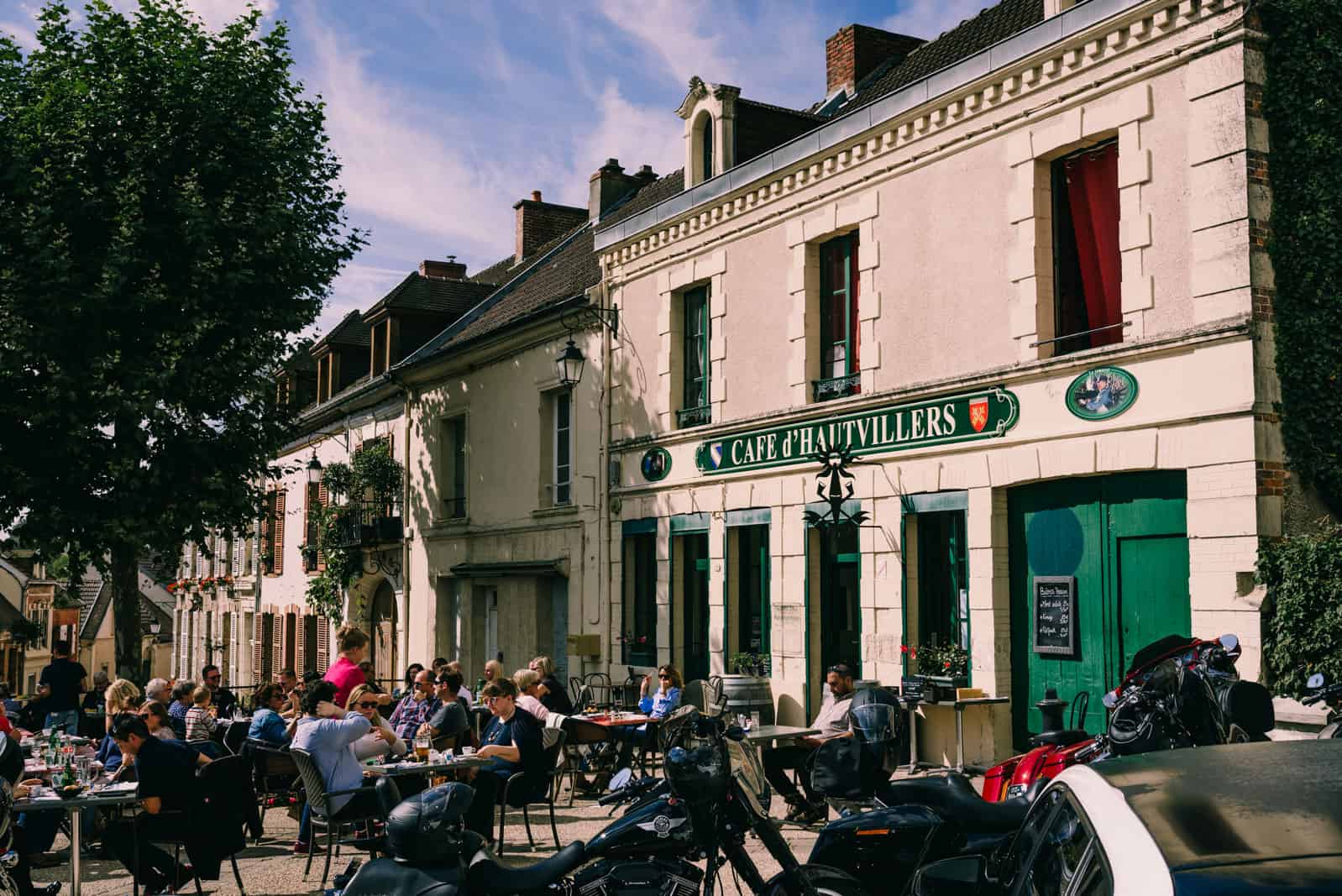
Ypres
Ypres, a small city in West Flanders, Belgium, flourished in the Middle Ages but was almost entirely destroyed in World War I. Between 21 July and 6th November 1917, in the Battle of Passchendaele a few miles east of Ypres, roughly half a million Allied and German soldiers died, and the town was flattened by enemy bombardment.
It is one of the saddest reminders of mindless human suffering and loss and one of the greatest examples of a town and its inhabitants reclaiming former glory and rebuilding their existence from scratch. One is nowadays still confronted with reminders commemorating the human suffering and destruction, but the restoration was a job so well done that Ypres is again an exceptionally beautiful city, especially the Cloth Hall, Town Hall, and the Courthouse surrounding its market square.
This weekend, the city was swarming with soldiers who had come for the centenary commemorations of the Battle of Polygon Wood, like Rob, who was responsible for operating a Park and Ride system that would bring visitors to the cemetery and commemorative site for the Dawn Service. After dinner, we came just in time to witness the finishing blasts, the ‘Réveille’ bugle call, of the Last Post beneath Menin Gate Memorial. Every evening at eight o’clock trumpet players from the fire brigade close the road and sound the Last Horn, a tribute to the men who walked out this gate (most walked out the other gates as Menin Gate was closest to the fighting and too dangerous to walk through) and died fighting off the German forces.
During the ceremony, however, the road was packed and we only caught occasional glimpses of what may have been the uniform of a bugler. Then the crowd parted, and the trumpeters marched towards the city centre.
The memorial’s shape and grandeur resemble that of a triumphal arch and we were taken aback by the sheer number of more than 54.000 names of fallen Commonwealth soldiers with no known grave inscribed on stone panels that were fitted on the walls. Wreath of red poppies splashed colour at the white stone and other visitors, like us, skimmed over the lines of unfamiliar names.
In Commonwealth countries war memorials play an important role, very many of which commemorate the loss of lives inflicted by Germany in World Wars I and II. In Germany on the other hand, its deeply shameful past still installs in many young Germans a subliminal but strong aversion to patriotism even though that generation grows up learning French at school, goes on school exchanges to the UK, and knows about war only from history class. Though I don’t feel ashamed personally of my home country’s past, I feel no doubt obliged, as any person should, to advocate peace and very grateful that nowadays an Australian soldier would show his German friends around a war memorial that signifies the death of so many of his fellow countrymen.
My maternal granddad, at the time of World War II, lived in a small German village 7 kilometres from the French border. Aged 17 he was too young, by a year, to be drafted into the German army, but was given a gun to shoot French thieves stealing chickens and other provisions from the farmers in his home village at night. When people were starving on both sides and food was hard to come by, farmers were often a little better off than most. As he recounted those nights on the scout I pictured him crouching in the dark by the henhouse where I had snatched eggs from under the hens as a little kid. A weapon he had never fired at the ready. “Of course, they came, many times, and stole. But how was I supposed to shoot them? They were young guys, just like me, and hungry,” he recalled, still deeply touched by the experience.
My granddad died this year, aged 86, and of all the things I will remember him for, his barrelling laughs, unshakable optimism, and wood carvings (just how his big paws managed to cut statues out of wood with such delicately chiselled features, I have no idea), it is also for his deep gratitude for peace between France and Germany.
It was he who taught me that a peaceful Europe as I know it is not to be taken for granted. ‘Just imagine, they’ve built a railway line from Saarbrücken to Saarlouis and we drive to France to shop without stopping at border controls,’ he said once. ‘So, what?’ I thought, but he wasn’t smiling and I understood that he valued this friendship between the two countries deeply. And, that we are obliged by the casualties of war and the memories of people who know of a hostile Europe to safeguard this peace, which seems blatantly obvious considering the history but given a recent rightist revival and shift towards nationalism that caused deep rifts throughout Europe, it is frighteningly not so.





In Ypres, every evening at eight o’clock trumpet players from the fire brigade close the road and sound the Last Horn, a tribute to the men who walked out this gate (most actually walked out the other gates as Menin Gate was closest to the fighting and too dangerous to walk through) and died fighting off the German forces.
Troyes
From Ypres, we returned to the Champagne and visited its former capital, Troyes, located on the Seine river 150km southeast of Paris. This town serves as a great example of the cultural and historical riches accumulated in Europe. Hardly anybody knows the place – I’d never heard of it until zooming into the Champagne on google maps and thinking this place called Troyes would make for a convenient stop to stretch our legs on the long drive. It’s presumably one of the loveliest medieval towns in France, if not Europe.
Too small to be of relevance, it was spared from enemy fire during the wars and a great number of half-timbered houses and Gothic churches persevered over time. Their well-preserved facades are painted in different colours and line the narrow alleyways that some very clever person has declared car-free.
Contrary to my ignorant assumption that Troyes is a blind spot on the map to most, the tables of restaurants sprawling into the square were well frequented by tourists. But few strayed far from Place Alexandre Israël to duck into Ruelle des Chats, discover an oasis of greenery in the small garden next to Eglise Ste-Madeleine, or peek into inner courtyards with wells dating back to medieval times.




